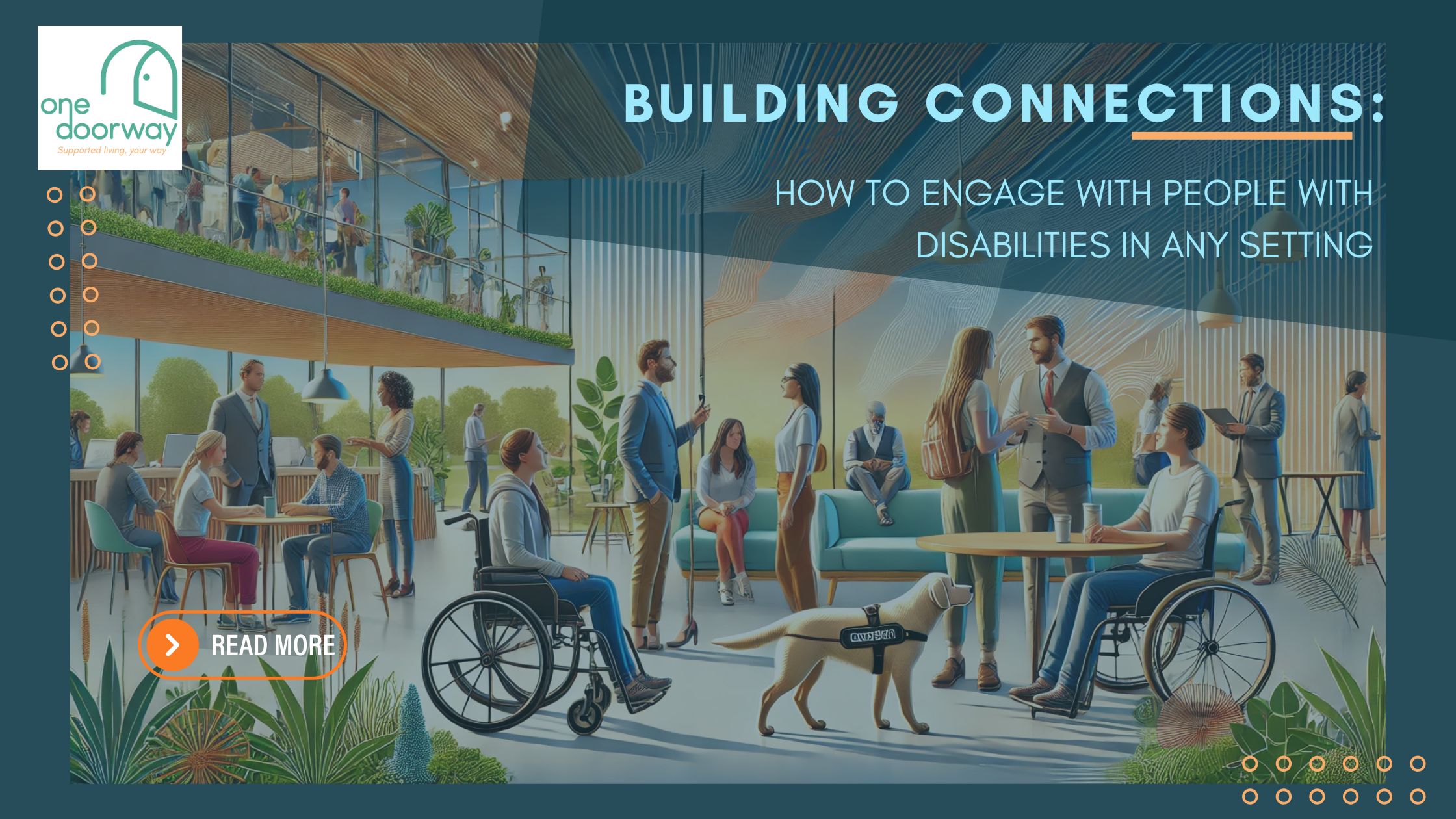Building Connections: How to Engage with People with Disabilities in Any Setting

Building genuine connections is crucial in any interaction, and it becomes even more significant when engaging with individuals with disabilities. To navigate conversations effectively, one must be thoughtful and respectful while striving to build meaningful and lasting relationship. Understanding how to communicate effectively and inclusively is essential, whether in professional, social, or casual settings. In this blog, we will explore practical strategies to help you approach, engage, and build connections with people with disabilities, ensuring that your interactions are rooted in respect, understanding, and mutual appreciation.
Strategies for Effective Engagement with People with Disabilities
1. Start with Respect and Empathy
Respect is the foundation of any meaningful connection. When interacting with people with disabilities, it’s important to approach conversations with empathy, recognising their unique experiences. Avoid making assumptions about their abilities or needs. Instead, ask open-ended questions to understand their preferences and how best to support them.
Tip: Phrases like, “How can I assist you?” or “Is there anything you need to be more comfortable?” should be used. This demonstrates a willingness to accommodate their needs.
2. Focus on the Person, Not the Disability
Remember that a person’s disability is just one aspect of their identity. Therefore, the focus should be on the individual’s personality, interests, and strengths rather than their disability. This approach fosters a more authentic and balanced relationship, free from stereotypes or bias.
Tip: Conversations about shared interests or hobbies can be initiated. This common ground is likely to create a more inclusive environment.
3. Practice Effective Communication
Effective communication is, indeed, key to building connections. Depending on the disability, you may need to adjust communication methods. For instance, when engaging with someone who is deaf or hard of hearing, consider using sign language, writing notes, or ensuring your face is visible for lip-reading. Always ask how the person prefers to communicate and practice patience, giving them the time to express themselves..
Tip: If uncertainty arises, polite inquiries should be made. It is better to ask than to make assumptions that could lead to misunderstandings.
4. Be Mindful of Physical Space
Physical accessibility is a significant aspect of engaging with people with disabilities. Ensure that the environment is accessible, whether by arranging furniture for wheelchair access or providing materials in accessible formats. Also, be mindful of personal space—assistive devices, such as wheelchairs or guide dogs, should not be touched without permission.
Tip: In group settings, it is advisable to check whether the space accommodates everyone’s needs, ensuring equal participation.
5. Break Down Barriers and Encourage Inclusivity
Social and physical barriers can hinder connection-building. Encourage an inclusive atmosphere by advocating for accessibility and challenging discriminatory behaviour. This may involve speaking up when someone is excluded or making your workplace or social setting welcoming for everyone.
Tip: Lead by example—practice inclusivity and encourage others to do the same to help create a supportive community for everyone.
Organisations That Can Enhance Effective Communication with Disabilities
Building connections with people with disabilities requires more than just personal effort—it demands a community-wide initiative. Many organizations in Australia promote inclusivity and offer resources, training, and support.
One Doorway:
Our mission at One Doorway is to empower individuals living with disabilities by fostering a more inclusive community. Our values—respect, integrity, empowerment, and collaboration—guide everything we do. We offer services such as community engagement programs, support for independent living, and advocacy to promote disability inclusion. Partnering with One Doorway gives you access to resources that help create more inclusive environments and build meaningful connections with people with disabilities.
Australian Network on Disability (AND):
AND works with businesses and organisations to improve accessibility and inclusion in the workplace. They offer training, consultancy services, and resources to help build an inclusive culture where people with disabilities can thrive.
People with Disability Australia (PWDA):
PWDA is a national disability rights, advocacy, and representative organisation that offers various programs to promote the inclusion of people with disabilities in all aspects of society. They provide resources and support to help individuals and organisations engage more effectively with people with disabilities.
National Disability Services (NDS):
NDS is the peak body for non-government disability service organisations, representing providers across Australia. They offer resources, training, and advocacy to promote inclusion and improve the quality of services for people with disabilities.
Final Thoughts
Building connections with people with disabilities in any setting requires empathy, respect, and a strong commitment to inclusivity. By focusing on the individual rather than their disability, practising effective communication, and staying mindful of both physical and social barriers, you can nurture meaningful and lasting relationships.
At One Doorway, we dedicate ourselves to fostering inclusive communities where everyone feels valued and supported. Our mission revolves around empowering individuals living with disabilities by creating environments that promote respect, dignity, and independence. Furthermore, we believe in the power of collaboration and actively strive to work closely with individuals, families, and communities to build a more inclusive society. To learn more about our services and how we promote disability inclusion, please visit One Doorway. Together, let’s work towards building a culture where everyone can thrive.



